Wild news from our reserves – 28 July 2023
Fungi at Foxburrow - Ben Calvesbert
The Carlton Marshes team were thrilled to capture this close-up footage of a peregrine falcon taking a rest from hunting unsuspecting waders on our nature reserve. Peregrines usually nest on cliffs however, in the absence of this habitat, they have adapted to nest in tall man-made structures such as docks, silos and bridges.
Marsh harrier passes a frog
Warden Gavin Durrant took this amazing image of a female marsh harrier passing food to her youngster. If you look very closely, you can see that the dropped item was a frog.
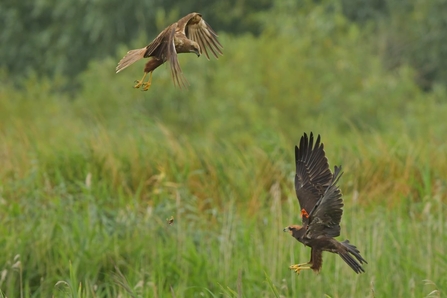
Marsh harrier food pass – Gavin Durrant
Wing tag insights
This year has been a successful one for marsh harriers with five nests at Carlton Marshes producing thirteen fledged young, eleven of which have been tagged with orange wing tags.
The tagging project has been going on for several years now with a remarkable resighting rate of nearly 40% after moving on from their nesting areas. The information gathered has shown that some birds remain in the UK, but others travel many miles, with one even being sighted in Algeria.
Another interesting fact is that two of the nests were serviced by the same male simultaneously for the second year running, producing five youngsters on each occasion; which shows that he must be a very productive hunter. He himself is a tagged bird originating from a nest at Somerleyton, near Lowestoft, in 2018.
Marsh harriers have also successfully bred at Hen Reedbeds this year, where there is another long-staying male which was originally tagged in Cantly, Norfolk, in 2018. One of the fledglings from this nest has also been tagged recently, so we can continue to monitor the population. Many thanks to Ian Rouse for sharing his photo of the fledgling below.
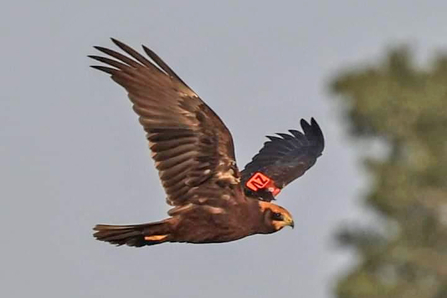
Marsh harrier tagged at Hen Reedbeds - Ian Rouse
Fungi grotto
The flowering thistles at Foxburrow nature reserve are providing a haven for bumblebees this summer. Warden Ben Calvesbert also discovered these fungi hidden inside a fallen tree, resembling a secret grotto!
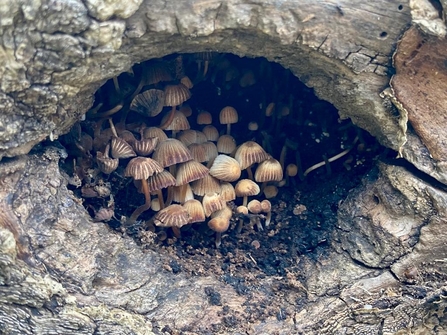
Fungi at Foxburrow - Ben Calvesbert
Cutting for diversity
Spratt’s Water at Carlton Marshes is cut on a seven-year rotation which encourages floristic diversity and provides habitat for a wonderful variety of insects and birds. This week warden Lewis Yates and his team of brilliant volunteers used a pedestrian mower to cut areas too soft for tractors.
In the image below to the left of the cut strip, you can see older vegetation full of dead material, to be cut next year. On the right is fresher, lusher regrowth after last year's cut. In the middle is a lovely raked clean area cleared by our reserve volunteers – thank you!
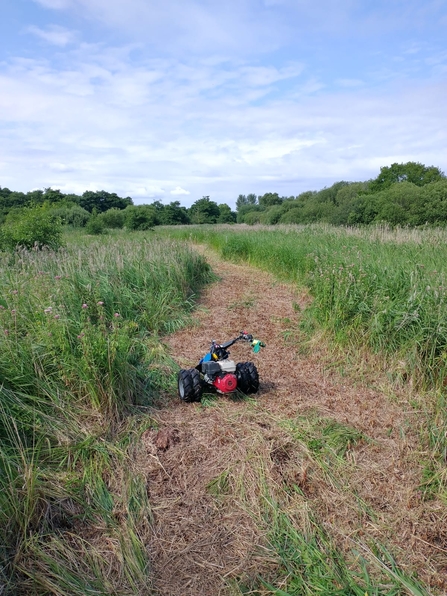
Spratt’s Water rotational cut - Lewis Yates
Magical moths
The moth monitoring trap at Church Farm has yielded yet more beauties to marvel at!
Annual fen raft spide count
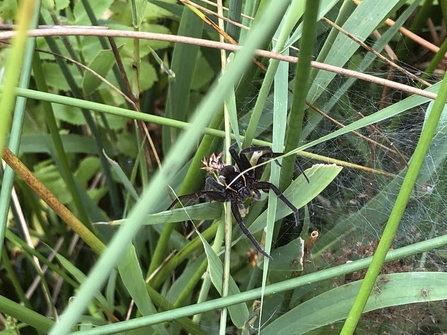
The team at Carlton Marshes have been conducting their annual count of fen raft spiders on the reserve. One the UK's largest and rarest spiders, the fen raft spider was introduced to Carlton Marshes in 2011 as part of a significant translocation project that aimed to help save the species from extinction.
The fen raft spider population on the reserve has grown at Carlton with over 40 recorded in the 2022 count.
Common lizard sighting
A group of common lizards were spotted at our Lound Lakes reserve; which is a hotspot for the reptile in north Suffolk.
As the name suggests, the common lizard is the UK's most common and widespread reptile. Look out for them as they bask in the warm sun as you wander around heathlands, moorlands, and grasslands.












